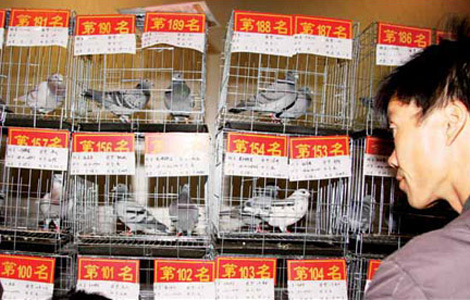China and Europe ride the smart wave
By Patrick Schuler ( China Daily Europe ) Updated: 2013-12-20 10:04:02
Partnerships are playing a key role in the greening of Chinese cities
Many Chinese cities are now focusing on improving air quality and providing smart services to their citizens to grow their municipal economies, while achieving the country's five-year plan targets for a 17 percent cut in carbon emissions and a 16 percent cut in energy consumption. In cities where new models of sustainable urban planning recognize the role of energy saving and environmental protection as critical components, city officials are exploring new ways of financing, integrating and encouraging the use of innovative smart eco-technologies.
This evolution is mainly driven by China's rapid urbanization. About 250 million citizens will move from rural areas to cities by 2020. New city models will take into account various social, economic and technological factors that together drive the creation of smart city and eco-city projects, creating business opportunities for Chinese and European companies and cities.
Information and communications technology companies provide the backbone for commercial operational infrastructures in smart cities. Such technology is infiltrating the entire value chain in production, operation, management, analysis and decision making, and new fields including building, mobility, healthcare and water dominate the national agenda. China's Ministry of Housing has selected about 200 pilot cities.
Vendors are now focusing on specific segments, such as Alibaba's smart government in Lishui, Schneider's smart building in Liuzhou, or Itron's smart water, heat and gas meters in Tianjin. These ad-hoc projects are opportunistic, but they are designed to be duplicated and optimized for other cities around China. International Data Corporation in the US estimates the mainland's smart city market to be worth $10.8 billion (7.8 billion euros) this year and forecasts double-digit growth for the next five years.
With the current pace and scale of urbanization, China's eco-parks need to meet stringent energy-saving, resource efficiency and sustainable building standards. The government aims to cut energy consumption by 65 percent in new buildings compared with existing ones. Eco-parks usually feature a residential park with green buildings, a business park with office space and research facilities, and a light industry park, representing the right mix to attract investment.
Chinese mayors and developers are increasingly making agreements with their European counterparts to build green and healthy cities. Recent collaborations include: the Zhenjiang Sino-Swiss Ecological Industry Park, which will soon complete its Sino-Swiss R&D innovation center; the Qingdao Sino-German Ecopark, which is a pilot project between the Chinese and German governments to deepen cooperation in economies, business and technology; and the Beijing Sino-UK Green Building Park funded by Vanke, China's largest residential real estate developer, featuring the best of British design, materials, construction products and technologies for sustainable homes.
China accounts for almost 42 percent of all new buildings under construction worldwide: 2 billion square meters of new buildings are constructed annually, with more than 40 percent of China's total energy consumption directly or indirectly connected to construction. Cities are enhancing their infrastructures to include distributed renewable energy resources, such as solar, wind and geothermal, while also integrating utility grids to supply electricity, gas and water and cogenerate electricity and useful heat.
Business partnerships will keep forming between smart and eco SMEs. Examples include PassivSystems of Britain and JinkoSolar of China introducing a complete smart home energy management solution into the Chinese market; or Prudent Energy of Beijing, a battery energy storage company co-invested by Idinvest Partners, acquiring Canadian technology to leverage China's low manufacturing costs and access to the world's largest wind power market. Overall, China's electricity generation from renewable sources will account for more than 15 percent of total electricity generation by 2020.
We are seeing a new urban planning shift toward compact cities with sophisticated mobility systems that integrate multimodal systems, such as subways, tramways and electric vehicles. Volkswagen is already introducing innovative mobility services, such as mobility on-demand, e-mobility and online mobility. It is also bringing its Hanover Quicar car-sharing experience to China and collaborating with Nari and State Grid on an electric-vehicle charging system. China plans to have 5 million electric vehicles on the market by 2020, which would make it the world's biggest e-mobility market.
New governance schemes are being developed to raise cities' awareness of the carbon they produce, and new benchmarking technologies are being introduced into neighborhoods and social networks. This is aimed at creating carbon-neutral cities with efficient energy and transport systems at their core that are connected to end users through, for example, the Haier Smart Life system, which features home appliance controls, lighting and multimedia entertainment.
IssyGrid near Paris, the first smart eco-district in France, is a French consortium led by Alstom and Bouygues that allows the district to keep its carbon emissions and energy costs to a minimum. A new service is being launched to inform end users of their carbon efficiency and link them to demand-response programs and multimodal transport services. This project will ultimately feature all the components of a smart eco-city, including green building, PV and cogeneration, energy storage, smart street lighting, EV charging spots and the critical smart city management cockpit, covering the needs of nearly 10,000 people. This smart eco-city will be developed in an open-ended manner over five years and will be supported by an information program designed to achieve maximum buy-in among users and partners.
The smart eco-city movement in China started with the Sino-Singaporean eco-city project in Tianjin, established between Singapore and China in 2007. The aim was to be a scalable and replicable model of sustainability with localized technologies that can be industrialized, produced and sold to other cities. Despite an impressive line-up of smart technologies from major technology companies, integration of these multi-vendor solutions is difficult. The financing through a joint venture also causes conflicts of interest, leading to delays in implementation.
To be successful from the beginning, the new wave of smart eco-parks must integrate and implement the eight pillars of financing, green building, renewable energy, e-mobility, health and biodiversity, water, recycling, and smart services.
By 2020, 100 million Chinese will be traveling overseas as tourists every year, many of whom will be attracted by the Western quality of life. They will expect a similar environment back home. The goal for smart eco-parks should be to integrate a country's uniqueness into its concept and management to attract both Westerners and Chinese to live, work, invest, join ventures, and set up offices or factories in the park. The Shenyang Sino-EU Sustainable Urbanization Park, a pilot project funded by the EU and China, is encouraging this new wave.
Patrick Schuler is the founder of SmartEcoCity Partners and manages Idinvest Partners and EDF's Electranova Capital green smart-up portfolio in Asia. He is based in Shanghai. He spoke to Lukas Thibaut. The views do not necessarily reflect those of China Daily.
European Weekly
 China taken on as building partner
China taken on as building partner
Meetings with central and Eastern European heads underline China's global roal.












